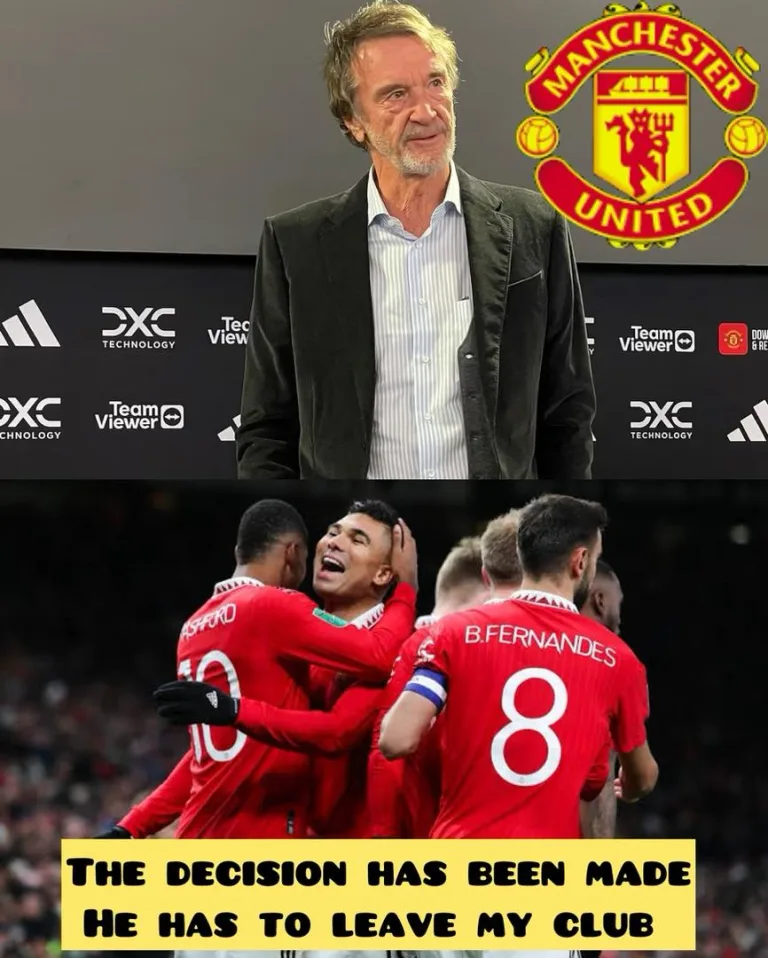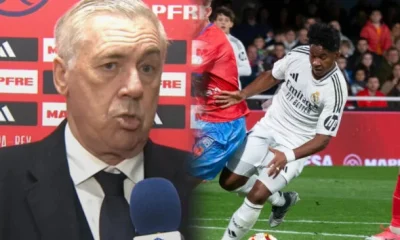Manchester United
Sir Jim Ratcliffe has successfully terminated the contract of a flop player

The football world was buzzing with the latest news: Sir Jim Ratcliffe, the powerful businessman and owner of the well-known football club, had made a decisive move that would reshape the team’s lineup. After months of anticipation, Ratcliffe had successfully ended the contract of Phil Jones, a player whose time at the club had become synonymous with frustration and missed opportunities. This morning’s announcement marked the end of weeks of speculation and negotiations and signaled a major turning point for both Jones and the club.
Phil Jones, once regarded as one of England’s brightest young defensive talents, had seen his career at the club descend into obscurity. Injuries and inconsistent performances had relegated him to the sidelines, and over time, he became a symbol of the club’s misjudgments in the transfer market. As the seasons passed, Jones’s presence on the bench became a constant, a reminder of unrealized potential and a source of growing frustration for both fans and management.
Sir Jim Ratcliffe, recognized for his hands-on approach and dedication to excellence, had been contemplating a major overhaul of the squad. The need to offload underperforming players and bring in new talent was a priority, and Jones had become a prominent example of a high-profile player whose contract had turned into a burden for the club. Ratcliffe’s decision to terminate Jones’s contract was a strategic move aimed at both financial responsibility and team revitalization.
The termination of Jones’s contract was carried out with precision. It was announced early in the morning that the club and Jones had mutually agreed to part ways, closing a chapter that had seen the player largely forgotten in the stands. The club’s statement was brief but clear, emphasizing that the decision was in the best interest of all parties involved. “Phil Jones has been a dedicated member of our squad, but after careful consideration, we have decided to terminate his contract. We wish him the best in his future endeavors,” the statement read.
The timing of the announcement was intentional, as the club aimed to free up resources and roster space ahead of the upcoming transfer window. With Jones now a free agent, the club could focus on acquiring new talent and addressing the weaknesses that had been evident throughout the season. Ratcliffe’s strategic vision was clear: refresh the squad with players who could make an immediate impact and align with the club’s ambitious goals.
For Jones, the end of his time at the club was both an opportunity and a challenge. His departure was not without its own difficulties. As a free agent, he was now free to negotiate with other clubs, and it wasn’t long before news emerged that Jones was set to join one of the club’s fiercest rivals. The rivalry between the two clubs was well-known, and Jones’s move was expected to generate significant discussion and potentially even controversy among fans.
The rival club, eager to bolster their defensive options, saw potential in Jones. Despite his recent struggles, they believed that with the right environment and coaching, Jones could regain his form and provide valuable experience. The rival club’s management quickly expressed their excitement about the new signing. “We are thrilled to bring Phil Jones into our squad. His experience and versatility will be invaluable as we push for success this season,” they said in their own announcement.
As Jones prepared for this new chapter, the footballing world watched closely. The narrative of his career had changed dramatically—from a highly promising prospect to a forgotten figure on the bench, and now, a controversial transfer to a rival club. The story of his time at his former club would be one of missed opportunities and what might have been, but it was also a reflection of the unpredictable nature of football and the often-cyclical fortunes of players.
In the days following the announcement, the football world shifted its attention to how Jones would perform in his new setting. Would he be able to revive his career and silence his critics, or would the move only serve as a reminder of his struggles? The rival club’s decision to sign him was a risk, but it was one that had the potential to pay off if Jones could rediscover the form that once made him a highly sought-after talent.
For Sir Jim Ratcliffe and his club, Jones’s departure was a necessary step in their ongoing efforts to build a competitive and cohesive team. The move symbolized a larger strategy aimed at rejuvenating the squad and achieving long-term success. As the transfer window approached, the ripple effects of Jones’s departure would continue to be felt, influencing the future of both his new club and the one he left behind. The story of Phil Jones had taken yet another turn, and as with all stories in football, only time would reveal the final chapter.
-

 Barcelona10 months ago
Barcelona10 months agoVideo | Barcelona’s deceptive free kick against Athletic Bilbao
-

 Manchester United10 months ago
Manchester United10 months ago“I was forced to make that call…the wrong call wasn’t really my decision but they made me do it” I couldn’t do anything about it cause I’m only an official not the owner of the league…They wanted Manchester United to win Liverpool by all means💔”…those were the words of Micheal Oliver the Referee of the Liverpool Vs Manchester United match with strong claims that it wasn’t his decision rather be was ordered to🙀‼️‼️
-

 CHELSEA10 months ago
CHELSEA10 months agoAm tired of this place i want to leave” – Club make bid to sign £380k-per-year Chelsea ace who wants Stamford Bridge exit
-

 LIVERPOOL10 months ago
LIVERPOOL10 months agoLiverpool has officially completed the sensational signing of Spanish international Dani Olmo
-

 CHELSEA10 months ago
CHELSEA10 months agoIt will be amazing if he joins me here at Stamford Bridge. Even though it seems highly unlikely, it won’t kill me to try to convince him to join me here. I would very much love it if he joins me” – This is according to Cole Palmer as he has weighed in on the speculation surrounding Kobbie Mainoo’s potential move to Chelsea. The young midfielder has been the subject of transfer rumors, and Palmer’s reaction has added fuel to the ongoing discussions.
-

 Real Madrid10 months ago
Real Madrid10 months agoAncelotti drops everything on Endrick after the carton facing Minera : « It must be.. ».
-

 Manchester United10 months ago
Manchester United10 months agoRuben Amorim isn’t a baby coach so he should have known best not to start this player against Liverpool,you’ve tried him enough and he’s not giving any good results just get him replaced already, at first I thought it was Marcus Rashford causing the problems but I guess I’m wrong…keep starting him and he’ll get you sacked sooner than expected!” sports pundit Gary Neville speaks on Manchester United Player’s performance against Liverpool today
-

 ARSENAL10 months ago
ARSENAL10 months agoBREAKING NEWS: Arteta Tells £55M Arsenal Star to Find a New Club After Costly Newcastle Error
